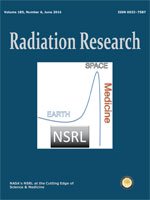Microgravity and radiation are stressors unique to the spaceflight environment that can have an impact on the central nervous system (CNS). These stressors could potentially lead to significant health risks to astronauts, both acutely during the course of a mission or chronically, leading to long-term, post-mission decrements in quality of life. The CNS is sensitive to oxidative injury due to high concentrations of oxidizable, unsaturated lipids and low levels of antioxidant defenses. The purpose of this study was to evaluate oxidative damage in the brain cortex and hippocampus in a ground-based model for spaceflight, which includes prolonged unloading and low-dose radiation. Whole-body low-dose/low-dose-rate (LDR) gamma radiation using 57Co plates (0.04 Gy at 0.01 cGy/h) was delivered to 6 months old, mature, female C57BL/6 mice (n = 4–6/group) to simulate the radiation component. Anti-orthostatic tail suspension was used to model the unloading, fluid shift and physiological stress aspects of the microgravity component. Mice were hindlimb suspended and/or irradiated for 21 days. Brains were isolated 7 days or 9 months after irradiation and hindlimb unloading (HLU) for characterization of oxidative stress markers and microvessel changes. The level of 4-hydroxynonenal (4-HNE) protein, an oxidative specific marker for lipid peroxidation, was significantly elevated in the cortex and hippocampus after LDR HLU compared to controls (P < 0.05). The combination group also had the highest level of nicotinamide adenine dinucleotide phosphate oxidase 2 (NOX2) expression compared to controls (P < 0.05). There was a significant decrease in superoxide dismutase (SOD) expression in the animals that received HLU only or combined LDR HLU compared to control (P < 0.05). In addition, 9 months after LDR and HLU exposure, microvessel densities were the lowest in the combination group, compared to age-matched controls in the cortex (P < 0.05). Our data provide the first evidence that prolonged exposure to simulated microgravity and LDR radiation is associated with increased oxidative stress biomarkers that may increase the likelihood of brain injury and reduced antioxidant defense. NOX2-containing nicotinamide adenosine dinucleotide phosphate (NADPH oxidase) may contribute to spaceflight environment-induced oxidative stress.
BioOne.org will be down briefly for maintenance on 17 December 2024 between 18:00-22:00 Pacific Time US. We apologize for any inconvenience.
How to translate text using browser tools
31 May 2016
Simulated Microgravity and Low-Dose/Low-Dose-Rate Radiation Induces Oxidative Damage in the Mouse Brain
Xiao Wen Mao,
Nina C. Nishiyama,
Michael J. Pecaut,
Mary Campbell-Beachler,
Peter Gifford,
Kristine E. Haynes,
Caroline Becronis,
Daila S. Gridley
ACCESS THE FULL ARTICLE

Radiation Research
Vol. 185 • No. 6
June 2016
Vol. 185 • No. 6
June 2016




